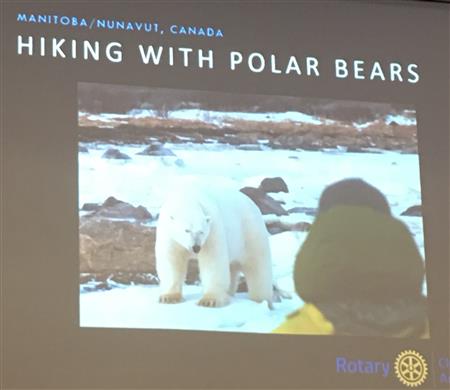Hiking with Polar Bears

Dan Clements spoke to our club about hiking with polar bears.
Bob traveled to Seal River in Canada. He flew over the tundra to get to Seal River Lodge. The polar bears were waiting as soon as he landed.
Most travelers see the bears from a tundra buggy but it is more difficult to photograph the bears. The advantages of hiking is you can get closer to the bears and explore more areas. Males can weigh up to 1800 pounds, they have a keen sense of smell, and they do not hibernate except for females with cubs. They can swim up to 200 miles and they leave 20-25 years. There are 22,000-30,000 polar bears in the world. All bears have scent glands in their paws. They leave scent trails when they walk. There are 19 polar bear sub-populations.

Dan got to see the Aurora Borealis. They experienced 20-25 below zero temperatures for their morning hikes. During a safety briefing Dan was told to get together in a group and don’t move. Look as big as possible and carry two rocks in each pocket to disrupt the way the bears scope things out.
Dan saw caribou, snowy owls, and arctic fox as well. He observed and photographed polar bears sparing, napping, and stretching.
The last polar bear census was done in 2011. One population is declining, most are remaining stable or growing. Polar bears are not becoming extinct and dying off. Ice is definitely melting. Since 1979 sea ice declined by about 39% in the arctic. Polar bears normally hunt on the ice so the melting they are on land one month longer than before. They are becoming emaciated. Polar bears can hunt beluga whales and dolphins. They are great swimmers and hunters in water.
Polar bears are mostly in decent shape. They will do well in select areas but go extinct in other areas. During the last ice age the area Dan visited was under 2-3 miles of ice and people were living in the area. Polar bears have demonstrated they can adapt to a changing environment.



